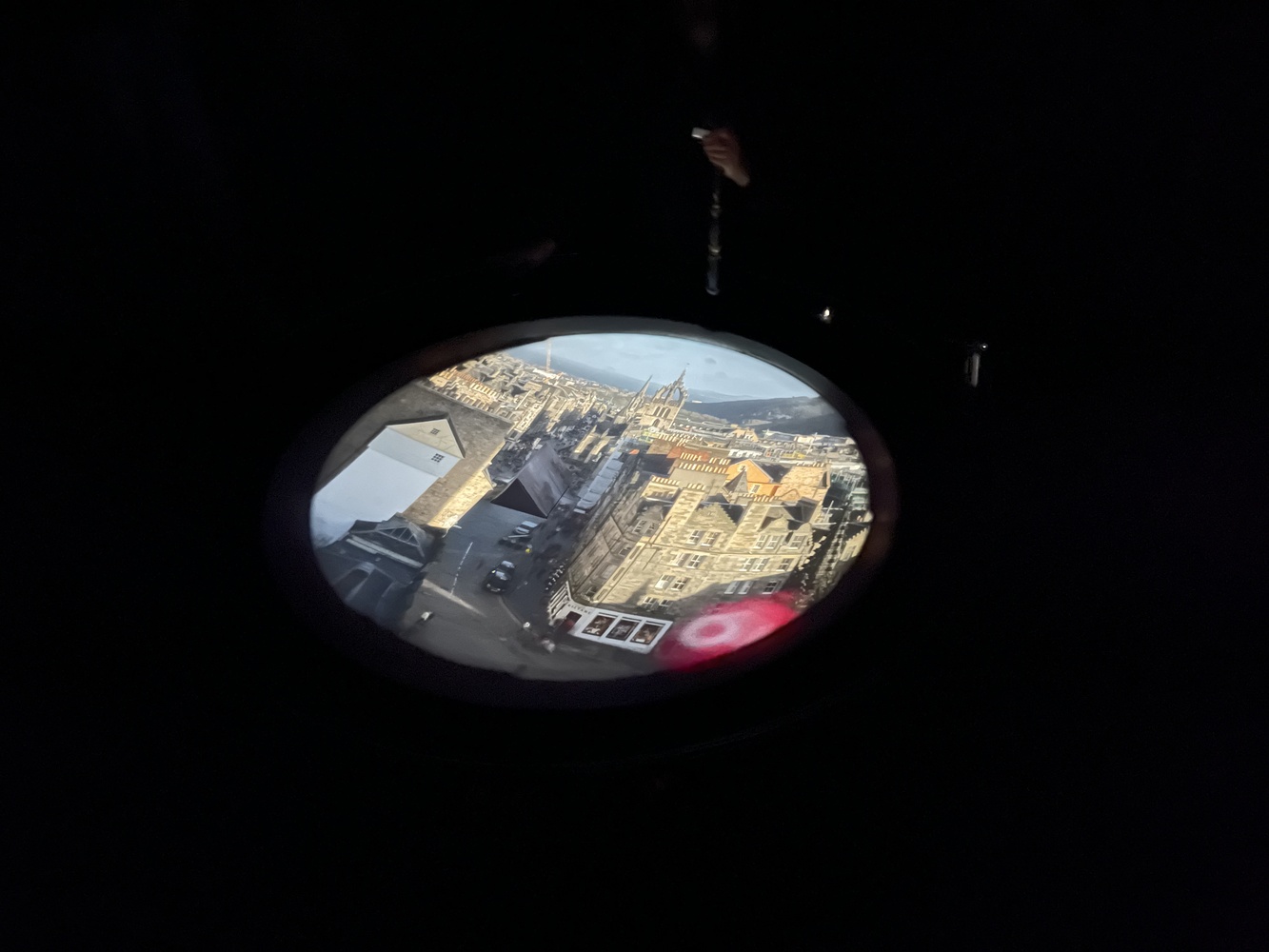[ad_1]
It’s very easy to find information online about new cameras, news, rumors, reviews, and which camera you should be using right now. But there’s far less information to be found about older cameras. Like many photographers, I find it interesting to look at the origins of photography and how far the science and technology in cameras has come in a relatively short period of time.
Recently, I was working in Edinburgh, Scotland. While Edinburgh is a beautiful and fascinating city for lots of reasons, there’s a wonderful piece of photographic history night next to Edinburgh Castle: the Camera Obscura.

For anyone not familiar with Edinburgh, the castle sits on top of Castle Hill at the end of the Royal Mile, between the Palace of Holyrood and Edinburgh Castle. Next to the entrance of the castle, you’ll find Observation Tower, which is also at the top of the hill with an excellent view of the city. In 1852, Maria Theresa Short purchased the tower, added two stories to the top of the building, and opened Short’s Observatory, Museum of Science and Art. The main attraction was the Camera Obscura at the very top of the tower. It’s a simple setup of lenses in the roof, which function as a lens to focus light into a darkened room. This then serves as a pinhole camera, projecting real-time images of the city onto a white table in the middle of the room.

Consider that this attraction was open to the public over 50 years before George Eastman started to manufacture celluloid film in 1888. The sight of sharp, moving images projected onto a table in the middle of a darkened room was overwhelming enough to make some of the Victorian tourists faint or feel nauseous. Even today, it’s quite impressive to behold these sharp images powered by nothing more than sunlight and a long rod to move the lenses around.
As a photographer, I grew up with 35mm film photography and work professionally with digital imaging. In my lifetime, I’ve seen technology move on from manual film cameras, through the development of digital photography, into advanced digital imaging devices and AI imaging. Standing in a darkened room, watching truly analog images projected onto a small table felt like I was witnessing photography, from the Greek phōs (light) and graphé (drawing), in its purest form.
 Camera Obscura, Catalogue, William Y. McAllister, New York, c. 1890
Camera Obscura, Catalogue, William Y. McAllister, New York, c. 1890
Rays of light travel in straight lines and change when they are reflected and partly absorbed by an object, retaining information about the color and brightness of the surface of that object. Lighted objects reflect rays of light in all directions. A small enough opening in a barrier admits only the rays that travel directly from different points in the scene on the other side, and these rays form an image of that scene where they reach a surface opposite from the opening. – Wikipedia
How Does It Work?
The Camera Obscura consists of a room with a small hole in the top. Light from outside passes through the hole and strikes a surface inside, where the scene is reproduced, inverted, and reversed, but with color preserved. The tower in Edinburgh uses a lens and mirrors, similar to a periscope, rather than just a pinhole, because it allows a larger aperture, giving a usable brightness while maintaining focus, and produces an image that is no longer reversed.


Where Can You Find One?
I’d absolutely recommend experiencing a Camera Obscura first-hand to get the experience of being inside a camera yourself.
Even if you can’t get to Edinburgh, there are still around 73 Camera Obscuras in the world open to the public, 20 of which are in the UK, followed by 14 in Germany. The others are spread around the world, with several in the United States. You can find your closest one by visiting Camera Obscura World.

I’d highly recommend a trip to Edinburgh, as it’s a fascinating city to explore and photograph. If you’re remotely interested in Harry Potter, you’ll see endless inspiration for the Wizarding world all over the city.
[ad_2]
Original Source Link